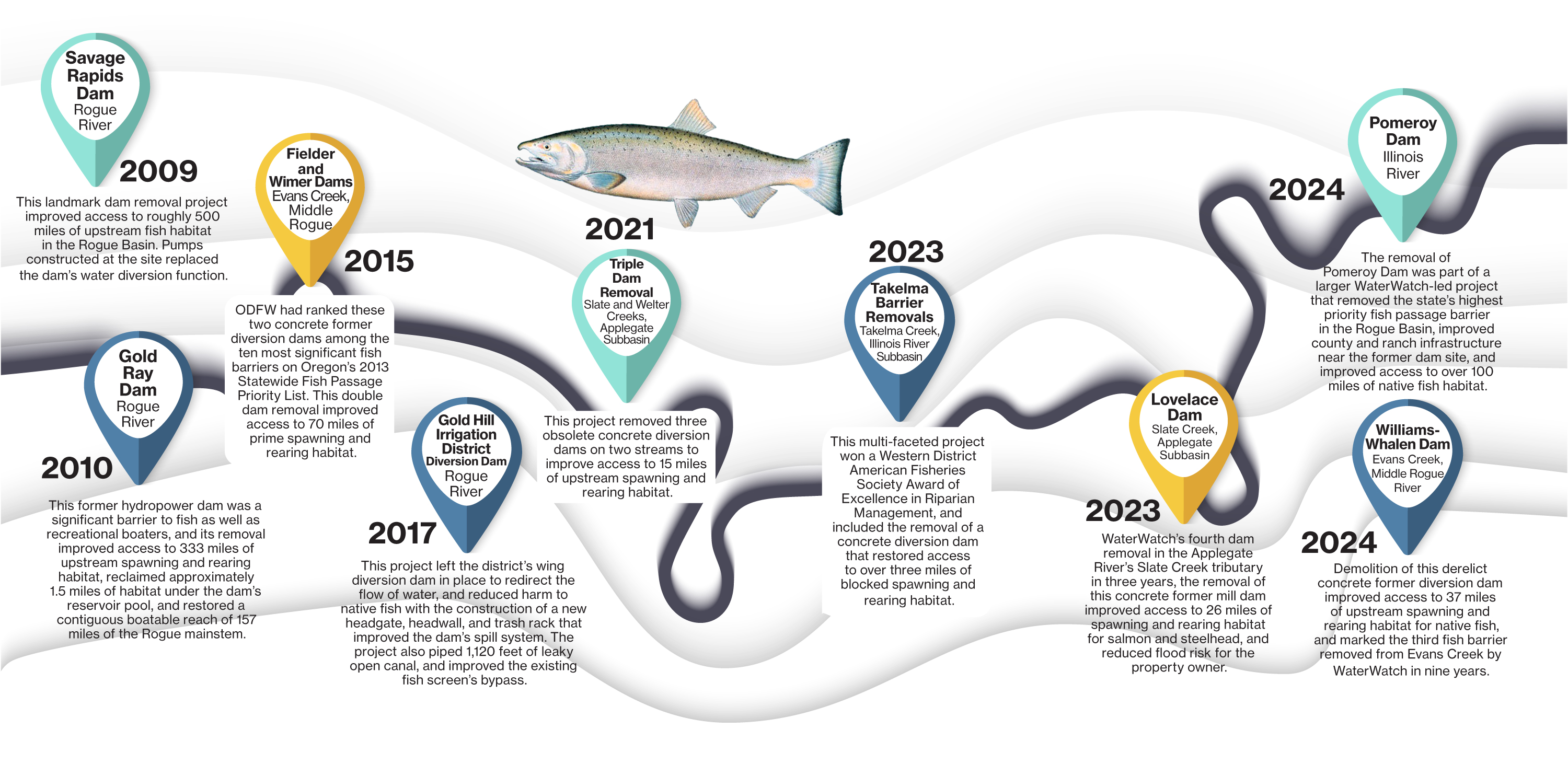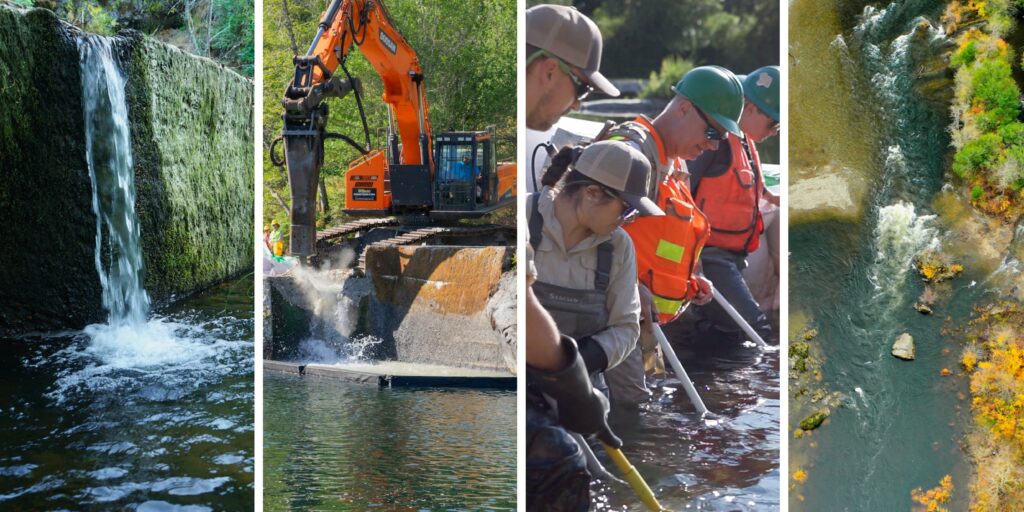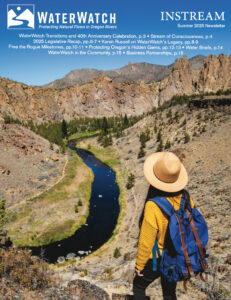By Jim McCarthy
The Rogue River has historically supported the largest runs of wild salmon and steelhead in Oregon outside of the Columbia Basin. In turn, this abundance has supported commercial and recreational fishing jobs throughout our region, seafood production, and world class recreational opportunities. Unfortunately, Rogue Coho salmon are now listed as threatened under the federal Endangered Species Act, and spring chinook, steelhead, and Pacific lamprey are similarly declining.
For decades, ending the harm caused by obsolete barriers that delay, injure, and kill the Rogue’s prized fish runs has been a major part of WaterWatch’s work to restore the Rogue’s natural abundance and resilience. Now, WaterWatch is working faster than ever to improve fish passage to high elevation cold water habitat and bolster Rogue native fish populations against the growing impacts of climate change. No other river restoration effort provides a bigger return on investment than barrier removal.
This timeline illustrates WaterWatch’s most important barrier removal successes in our ongoing Free the Rogue campaign.

2024
Pomeroy Dam
Illinois River
The removal of Pomeroy Dam was part of a larger WaterWatch-driven project that removed the state’s highest priority for fish passage correction in the Rogue Basin, improved county and ranch infrastructure near the former dam site, and improved access to over 100 miles of native fish habitat.
2024
Williams-Whalen Dam
Evans Creek, Middle Rogue River
Demolition of this derelict concrete former diversion dam improved access to 37 miles of upstream spawning and rearing habitat for native fish, and marked the third fish barrier removed from Evans Creek by WaterWatch in nine years.
2023
Takelma Barrier Removals
Takelma Creek, Illinois River Subbasin
This multi-faceted project won a Western District American Fisheries Society Award of Excellence in Riparian Management, and included the removal of a concrete diversion dam that restored access to over three miles of blocked spawning and rearing habitat.
2023
Lovelace Dam
Slate Creek, Applegate Subbasin
WaterWatch’s fourth dam removal in the Applegate River’s Slate Creek tributary in three years, the removal of this concrete former mill dam improved access to 26 miles of spawning and rearing habitat for salmon and steelhead, and reduced flood risk for the property owner.
2021
Triple Dam Removal
Slate and Welter Creeks, Applegate Subbasin
This project removed three obsolete concrete diversion dams on two streams to improve access to 15 miles of upstream spawning and rearing habitat.
2017
Gold Hill Irrigation District Diversion Dam
Rogue River
This project left the district’s wing diversion dam in place to redirect the flow of water, and reduced harm to native fish with the construction of a new headgate, headwall, and trash rack that improved the dam’s spill system. The project also piped 1,120 feet of leaky open canal, and improved the existing fish screen’s bypass.
2015
Fielder and Wimer Dams
Evans Creek, Middle Rogue
ODFW had ranked these two concrete former diversion dams among the ten most significant fish barriers on Oregon’s 2013 Statewide Fish Passage Priority List. This double dam removal ultimately improved access to 70 miles of prime spawning and rearing habitat.
2010
Gold Ray Dam
Rogue River
This former hydropower dam was a significant barrier to fish as well as recreational boaters, and its removal improved access to 333 miles of upstream spawning and rearing habitat, reclaimed approximately 1.5 miles of habitat under the dam’s reservoir pool, and opened 157 contiguous miles of the Rogue mainstem.
2009
Savage Rapids Dam
Rogue River
This landmark project improved access to roughly 500 miles of upstream fish habitat in the Rogue Basin, and pumps constructed at the site replaced the dam’s water diversion function.
Timeline illustration by Monet Hampson. Banner photos courtesy of the Rogue River Watershed Council, Crystal Nichols, and Dustin Saigo.
This article originally appeared in the summer 2025 issue of WaterWatch of Oregon’s Instream newsletter.


